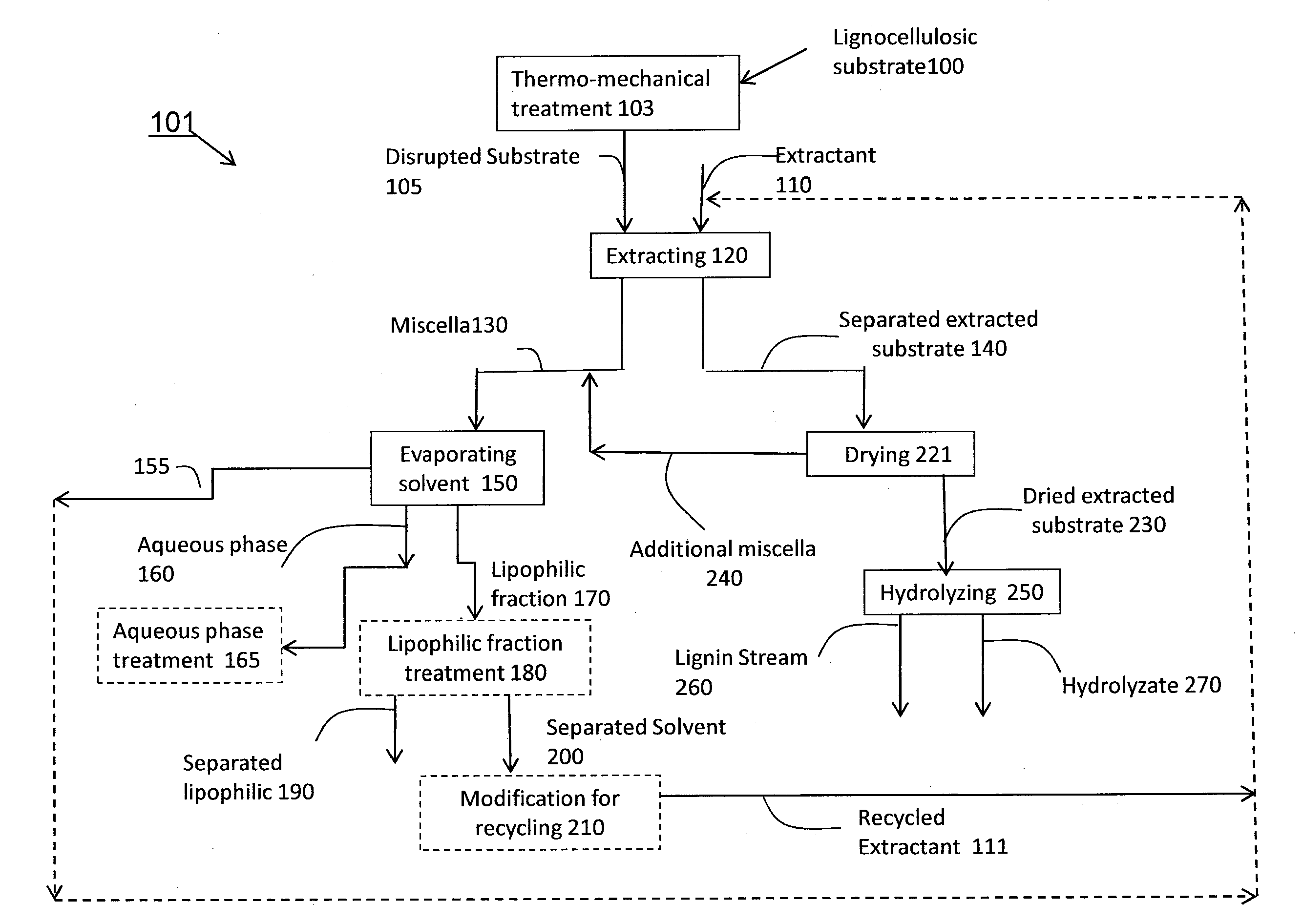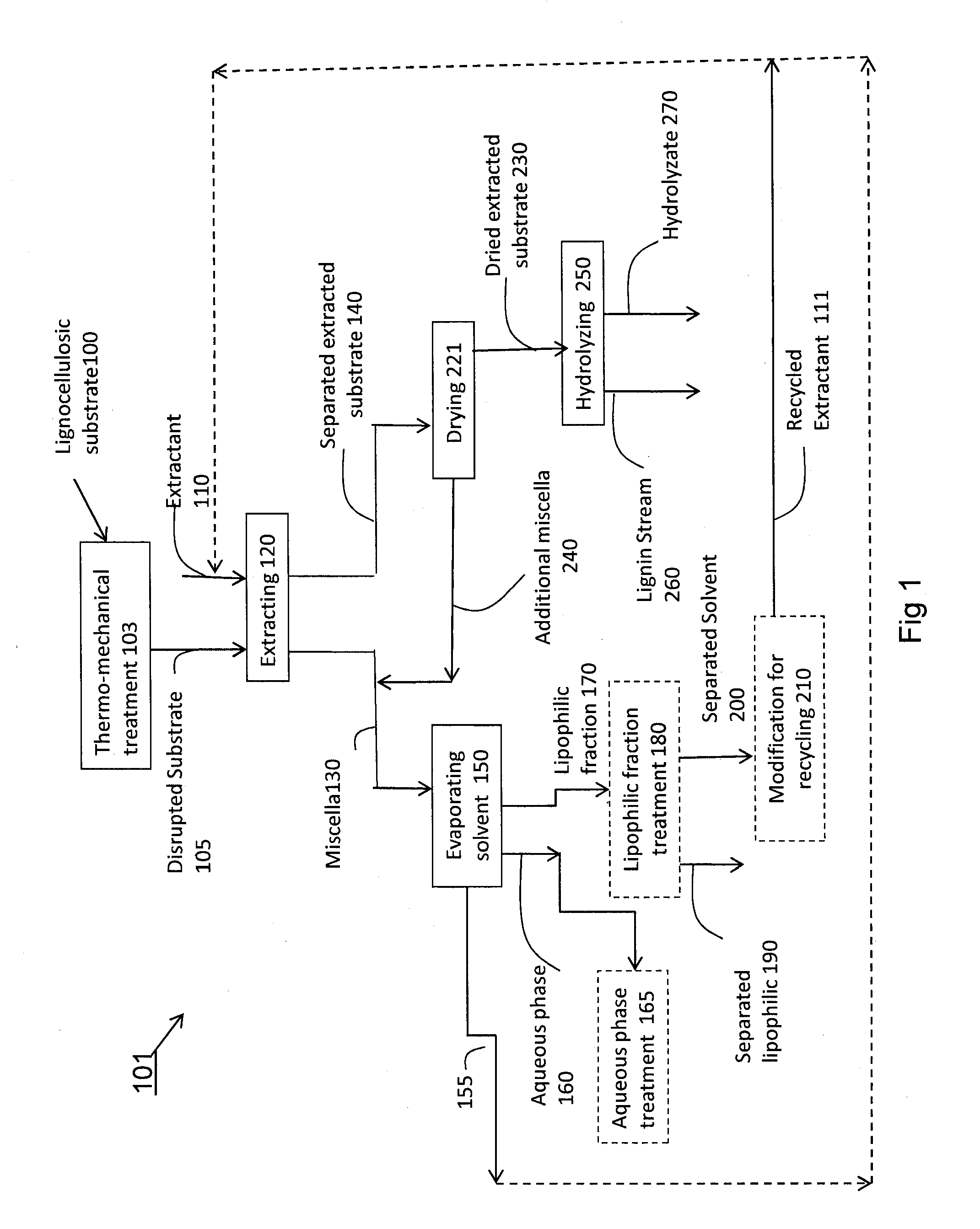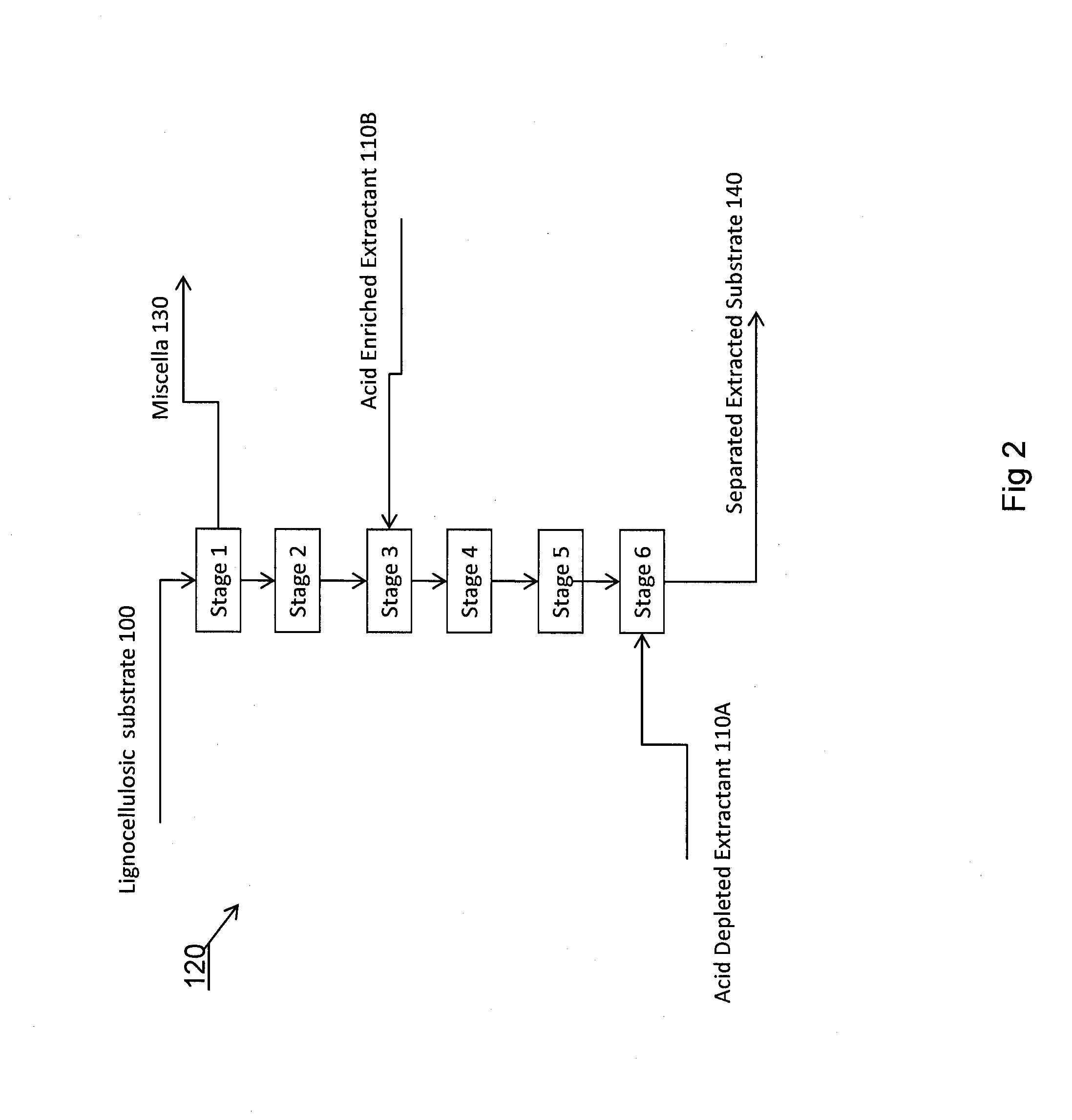Methods and systems for processing lignocellulosic materials and related compositions
a technology of lignocellulosic materials and processing methods, applied in the direction of lignin derivatives, glucose production, transportation and packaging, etc., can solve the problems of increasing consumption by industry, affecting food costs, and technical problems in the production of soluble carbohydrates, and achieve good solvation and high penetration
- Summary
- Abstract
- Description
- Claims
- Application Information
AI Technical Summary
Problems solved by technology
Method used
Image
Examples
example 1
Influence of Weak Acid on Extraction of Ash
[0612]In order to examine the effect of sulfurous acid on extraction of ash, as represented by calcium and magnesium ions, comparative extractions in the presence and absence of acid were conducted.
[0613]Briefly, 5.5 gr pine wood (containing 38% water and about 0.3% ash on dry basis), 13.3 gr acetone, 0-1.8 gr 5% H2SO3 solution and 0-1.74 gr water were introduced into vials.
[0614]In table 1, the initial composition of the reacted solvent is given in terms of H2SO3 wt % and acetone-water to dry wood ratio. For convenience, the extractions are grouped and ordered according to H2SO3 wt %.
[0615]Vials were closed and shaken at 55° C. for 4 hours. Liquid was removed and filtered through 0.45 micron filter and samples were taken for analysis and final composition of the acetone solution at the end of the experiment is summarized in Table 1; water content is determined by Karl Fisher test ASTM D6869; ISO 15512 and indicated in the table by water KF...
example 2
Influence of Steam Explosion on Extraction
[0619]In order to examine the potential of a predetermined pressure-temperature-time profile to improve extraction efficiency three different steam explosion treatments were compared to three negative control samples as summarized in table 2.
TABLE 2Exemplary Steam explosion (SE) parametersSteam explosionDurationSample type(min)Pressure (bar)SymbolNameexperimental215squareexperimental410Triangleexperimental212AsteriskcontrolNANADiamondNC original;pre-hammer millcontrolNANAXHammer milledcontrolNANACircleHammer milled
[0620]FIG. 4 is a plot of total solids extracted from dry wood (wt %) as a function of extraction time in minutes.
[0621]The plotted data indicates that steam exploded (SE) substrate was more amenable to extraction than either pre-hammer milled (NC original) or hammer milled substrate.
[0622]The results also suggest that steam explosion at 15 bar was more effective than steam explosion at 10 or 12 bar. Increasing time at the high pre...
example 3
Additional Acetone-SO2 Extraction
[0624]An additional extraction of pine wood was conducted using about 15% water in acetone with an average SO2 content of 4120 PPM. Extraction temperature was in the range of 50-55° C.
[0625]Final moisture content of the miscella was determined, mainly according to the solvent / wood ratio, as well as SO2 concentration. Volatiles in the extractor discharge to the desolventizer were found to have a concentration of 62% average; water in the miscella was 34.99% average, SO2 in the miscella was 0.163% average; pH of the miscella was 4; pH at the bottom of the evaporator was 3; and moisture in the desolventizer discharge was 12%.
[0626]It is currently believed that the system will be able to handle up to 12,000 PPM SO2 in acetone:water 90:10.
[0627]These results suggest that addition of SO2 to acetone contributes to removal of cations during extraction. Overall extraction efficiency appears to be in the range of 6-7% of the dry wood weight. No significant los...
PUM
| Property | Measurement | Unit |
|---|---|---|
| temperatures | aaaaa | aaaaa |
| temperature | aaaaa | aaaaa |
| boiling point | aaaaa | aaaaa |
Abstract
Description
Claims
Application Information
 Login to View More
Login to View More - R&D
- Intellectual Property
- Life Sciences
- Materials
- Tech Scout
- Unparalleled Data Quality
- Higher Quality Content
- 60% Fewer Hallucinations
Browse by: Latest US Patents, China's latest patents, Technical Efficacy Thesaurus, Application Domain, Technology Topic, Popular Technical Reports.
© 2025 PatSnap. All rights reserved.Legal|Privacy policy|Modern Slavery Act Transparency Statement|Sitemap|About US| Contact US: help@patsnap.com



